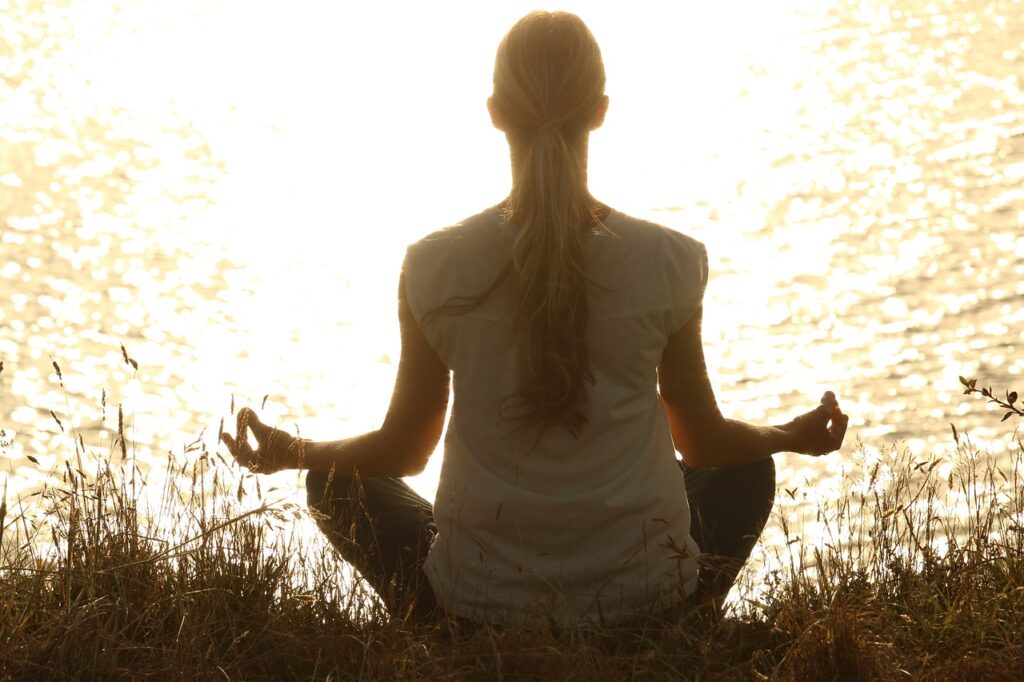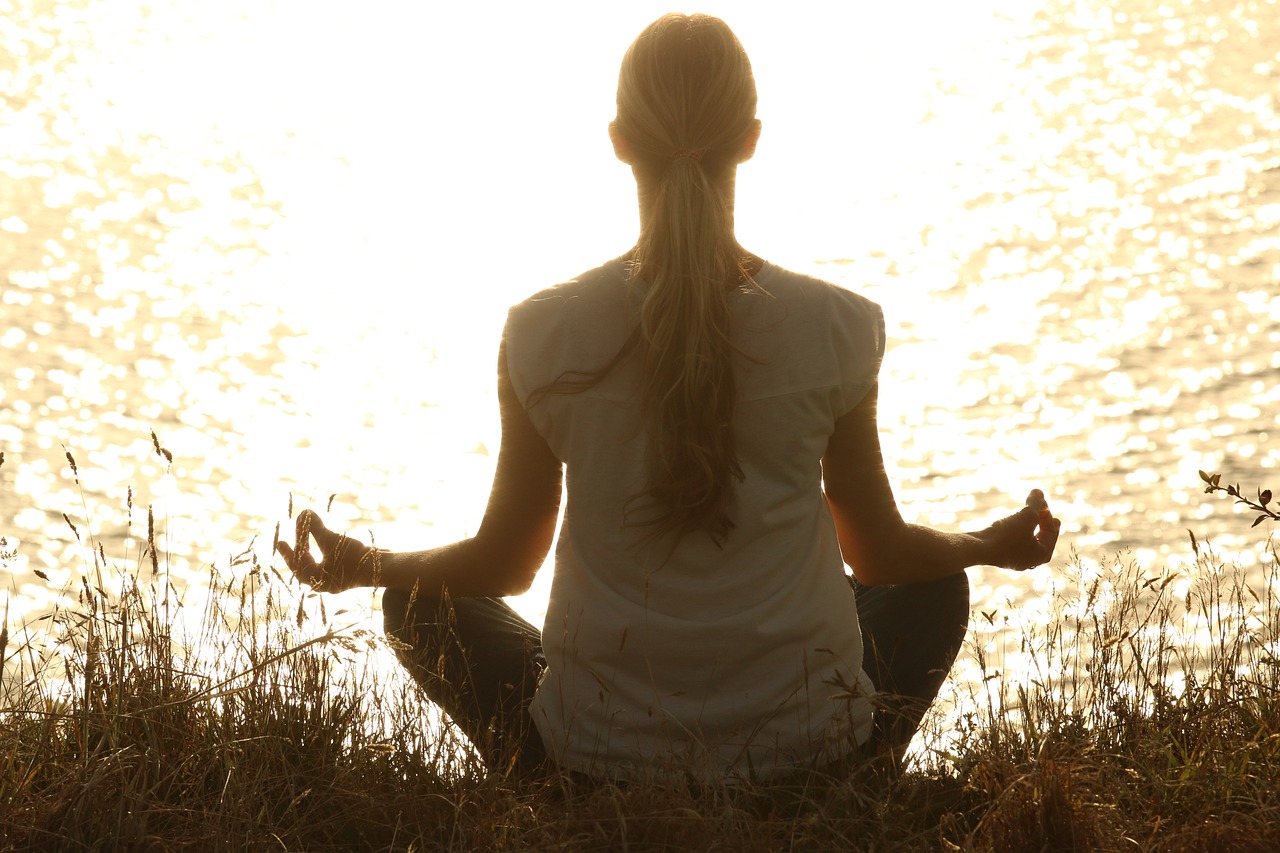If you’re new to the world of yoga, you’ve likely pondered this question before: can yoga be self-taught, or should you attend a class? It’s a valid inquiry, as the allure of practicing from the comfort of your own home is undeniable. However, the benefits of attending a yoga class extend far beyond the physical postures. In this article, we’ll explore both sides of the coin, highlighting the advantages of self-teaching while also acknowledging the unique offerings of attending a structured class. By the end, you’ll have a clearer understanding of which path may be best suited for your personal yoga journey.
Benefits of Practicing Yoga
Physical benefits
Practicing yoga offers numerous physical benefits. Regular yoga practice can improve flexibility, strength, and posture. The different yoga poses, or asanas, work on stretching and toning various muscles throughout the body, helping to increase overall flexibility. Additionally, yoga incorporates strength-building exercises that can enhance muscular strength, particularly in the core, arms, and legs. As a result, practicing yoga regularly can lead to improved balance and stability. Yoga can also contribute to better posture, as it encourages proper alignment and engages the core muscles to support the spine.
Mental benefits
In addition to the physical benefits, yoga is known for its positive impact on mental well-being. Engaging in yoga practice can help calm the mind, reduce stress, and improve mental clarity. The combination of mindful movement, deep breathing, and meditation in yoga can promote relaxation and reduce anxiety. Regular practice can also improve focus and concentration, allowing practitioners to develop a greater sense of mental clarity and awareness.
Emotional benefits
Practicing yoga can also have a positive impact on emotional well-being. The mindfulness and self-reflection encouraged in yoga practice can lead to a greater understanding and acceptance of one’s emotions. Through yoga, individuals may develop better emotional regulation skills and find a sense of inner calm and balance. Research has shown that yoga can help reduce symptoms of depression and improve overall mood. The combination of physical movement, deep breathing, and relaxation techniques in yoga can promote the release of endorphins, the body’s natural mood-boosting chemicals, leading to improved emotional well-being.
Self-Taught Yoga
Advantages of self-taught yoga
Self-taught yoga offers several advantages. One of the main benefits is the flexibility it provides in terms of time and location. You have the freedom to practice whenever and wherever suits you best, without being restricted by class schedules or commuting to a studio. Self-taught yoga also allows you to tailor your practice specifically to your individual needs and goals. You can choose the duration and intensity of your sessions, focus on specific areas of the body, or incorporate meditation and relaxation techniques according to your preferences. Additionally, self-guided practice gives you the opportunity to explore and experiment with different yoga styles and sequences at your own pace.
Challenges of self-taught yoga
While self-taught yoga can be rewarding, it does come with a few challenges. One of the main obstacles is the lack of personalized guidance and feedback. Without the presence of a qualified instructor, it can be challenging to ensure proper alignment and avoid potential injuries. It may also be difficult to know if you are performing the poses correctly or if you are progressing in your practice. Another potential challenge is staying motivated and committed to regular self-practice, as there are no external schedules or accountability mechanisms in place. It can be easy to get distracted or lose focus when practicing alone without the structure provided by a class.
Tips for self-taught yoga
To make the most of self-taught yoga, it is important to keep a few tips in mind. First, start with beginner-friendly resources such as books, online tutorials, or yoga apps that provide detailed instructions and demonstrations of poses. Use props such as blocks or straps to assist with proper alignment and prevent strain. Additionally, establish a dedicated space for your practice, free from distractions, where you can fully focus on your yoga journey. Set goals for yourself, whether it’s mastering a certain pose or practicing a certain number of times per week, and track your progress to stay motivated. Finally, periodically seek feedback and guidance from experienced yoga teachers or attend workshops to refine and deepen your practice.

Attending a Yoga Class
Advantages of attending a class
Attending a yoga class can offer numerous advantages, especially for those who prefer structured and guided practice. One of the main benefits is the presence of a qualified instructor who can provide personalized guidance and correct any misalignments in your poses. They can offer modifications or variations of poses to accommodate individual needs or injuries. Attending a class also allows you to learn from others in the group. Observing and interacting with fellow practitioners can inspire and motivate your own practice. Additionally, attending a class provides a dedicated time and space solely for yoga, creating a supportive environment and promoting accountability.
Finding the right class
Finding the right yoga class is essential to ensure a positive and beneficial experience. Consider your level of experience and choose a class that aligns with your skill level, whether you are a beginner or an advanced practitioner. It is also important to consider the style of yoga taught in the class. Different styles, such as Hatha, Vinyasa, or Ashtanga, have varying focuses and intensities, so choose one that resonates with your goals and preferences. Look for classes that have a friendly and inclusive atmosphere, where you feel comfortable and supported. Take advantage of free trial classes or introductory offers to explore different studios and instructors before committing to a regular class.
Choosing a qualified instructor
Selecting a qualified instructor is crucial for a safe and effective yoga practice. Look for instructors who have completed a recognized yoga teacher training program and hold relevant certifications. A qualified instructor should have a deep understanding of yoga principles, anatomy, and proper alignment, as well as the ability to adapt and modify poses for different individuals. Read reviews and seek recommendations from others who have attended their classes to gauge their teaching style and professionalism. It can also be helpful to have a conversation with the instructor before committing to a class to ensure their approach aligns with your goals and preferences.
Yoga Class Formats
Studio classes
Studio classes are the traditional format of attending yoga classes. These classes are held in dedicated yoga studios or fitness centers and typically follow a set schedule. Studio classes usually offer a variety of yoga styles and levels, allowing you to choose the ones that suit your preferences and skill level. They provide a structured setting with a designated practice space, props, and often a communal atmosphere. Studio classes offer the opportunity to receive immediate feedback from instructors and connect with fellow practitioners. Additionally, attending studio classes can provide a sense of community and belonging.
Online classes
Online yoga classes have gained popularity in recent years. They offer convenience and flexibility, allowing you to practice yoga in the comfort of your own home or wherever you have access to the internet. Online platforms host a wide range of classes, styles, and instructors, making it easy to find a class that suits your needs and preferences. Many online classes are pre-recorded, giving you the freedom to practice at your own pace and choose the duration and intensity of each session. Live online classes also exist, offering real-time instruction and the ability to interact with the instructor and other participants virtually. Online classes are ideal for those with busy schedules, limited access to studios, or who prefer practicing in a familiar environment.
Private lessons
Private yoga lessons provide a highly individualized and tailored experience. Whether you are a beginner looking for foundational guidance or an experienced practitioner seeking specific feedback and assistance, private lessons offer personalized attention and instruction. Private lessons can be conducted in a studio, your home, or even online. Working one-on-one with an instructor allows for detailed alignment adjustments, modifications, and the opportunity to work on specific goals or concerns. Private lessons are particularly beneficial for those with injuries, limitations, or specific therapeutic needs. While private lessons may be more costly compared to group classes, the individual attention and focus received can significantly enhance your yoga practice.

Building a Yoga Practice
Establishing a routine
Establishing a regular yoga practice is key to reaping the benefits of this ancient discipline. Create a routine that suits your schedule and personal preferences to ensure consistency. Consider the time of day that works best for you – whether it’s early morning to energize your day or in the evening to unwind and relax. Designate a specific space in your home or find a suitable yoga studio where you can comfortably practice without distractions. Start with realistic goals, such as practicing two to three times a week, and gradually increase the frequency as you become more comfortable and committed. By establishing a routine, yoga becomes a habit and an integral part of your daily life.
Setting goals
Setting goals in your yoga practice can provide motivation and direction. Reflect on what you hope to achieve through yoga – whether it’s improving flexibility, mastering challenging poses, reducing stress, or developing better body awareness. Establish short-term and long-term goals that are specific, measurable, achievable, relevant, and time-bound (SMART goals). Break down bigger goals into smaller milestones that can be celebrated along the way. Setting goals allows you to stay focused, track progress, and continually challenge yourself, fostering personal growth and transformation.
Tracking progress
Monitoring your progress in your yoga practice can help you stay motivated and inspired. Keep a journal or use a tracking app to record your practice, including the duration, focus, and any insights or reflections. Note any improvements in your strength, flexibility, or balance, as well as any emotional or mental shifts you experience. Take photos or videos periodically to visually document your progress over time. Celebrate milestones and achievements along the way, no matter how small they may seem. Tracking your progress not only provides a sense of accomplishment but also acts as a reminder of the positive impact yoga is having on your overall well-being.
Safety Considerations
Proper alignment
Maintaining proper alignment is crucial to ensure a safe and effective yoga practice. Proper alignment helps prevent injuries and allows for the optimal engagement of muscles and joints. Focus on your body’s alignment in each pose, paying attention to the positioning of your head, neck, spine, shoulders, hips, and legs. Use mirrors, visual cues, or assistance from an instructor to assess your alignment. If certain poses feel uncomfortable or cause pain, modify them or seek guidance from a qualified instructor. Continuously check your alignment throughout your practice and make adjustments as needed.
Avoiding injuries
While yoga is generally a safe and low-impact activity, injuries can still occur if proper precautions are not taken. To minimize the risk of injuries, warm up adequately before each practice session by performing gentle movements and stretches. Listen to your body and respect any limitations or discomfort. Avoid forcing yourself into poses that feel beyond your current capabilities. Gradually progress in your practice, respecting your body’s unique needs and limitations. If you have any pre-existing medical conditions or injuries, consult with a healthcare professional before starting a new yoga routine to ensure that it is safe and appropriate for your individual circumstances.
Modifying poses
Modifying poses is essential to accommodate different body types, abilities, or limitations. Not every pose will be accessible or suitable for every practitioner. Be willing to modify poses by using props, such as blocks, straps, or bolsters, to make them more accessible and comfortable for your body. Props can assist with proper alignment, provide support, and help deepen certain stretches. Listen to your body and make adjustments as needed. If a particular pose feels too challenging or causes pain, consult with a qualified instructor who can offer modifications or alternative poses that are better suited to your individual needs.

Yoga Equipment and Props
Essential yoga equipment
While yoga can be practiced with minimal equipment, certain essentials can enhance your practice. The most essential piece of equipment is a good-quality yoga mat, providing cushioning, grip, and stability during poses. Choose a mat that suits your preferences, considering factors such as thickness, material, and surface texture. Comfortable and breathable clothing that allows for ease of movement is also important. Additionally, a water bottle to stay hydrated and a towel to wipe away sweat can be beneficial during intense or heated classes. Having a designated space or dedicated yoga area in your home with enough room to move freely is also important for a consistent practice.
Optional props
Yoga props can be valuable tools to support and deepen your practice. Some common optional props include blocks, straps, bolsters, blankets, and yoga wheels. Blocks can provide stability and assist with balance in standing poses or provide support during seated poses. Straps can help with stretching and increasing flexibility by extending reach and providing gentle assistance. Bolsters and blankets can be used for added support and comfort, particularly during restorative or relaxing poses. Yoga wheels can be used to challenge balance, increase flexibility, and deepen backbends. While not essential, these props can enhance your practice and provide additional support when needed.
Using props effectively
To use yoga props effectively, it is important to understand their purpose and how to utilize them properly. Follow instructional videos or guidance from qualified instructors to learn how to incorporate props into different poses and sequences. Experiment with different prop placements and adjustments to find what feels most supportive and comfortable for your body. Keep in mind that props are meant to assist and enhance your practice, not to force your body into deeper poses. Use props mindfully and with moderation, ensuring that they complement and support your body’s natural movements. As you become more experienced, you may find that you rely on props less frequently, as your body gains strength, flexibility, and stability.
Learning Resources
Books
Books on yoga can provide a wealth of information, guidance, and inspiration for both self-taught practitioners and those attending classes. From beginner’s guides to in-depth explorations of specific yoga styles or philosophies, there are books available to suit every interest and experience level. Some popular books for beginners include “Light on Yoga” by B.K.S. Iyengar, “The Heart of Yoga” by T.K.V. Desikachar, and “Yoga Anatomy” by Leslie Kaminoff and Amy Matthews. These books not only provide detailed instructions on various poses but also delve into the philosophy and principles behind yoga. Books can be a valuable companion to deepen your understanding and take your practice to the next level.
Online tutorials
With the rise of the internet, there is an abundance of online tutorials available for learning and practicing yoga. Online platforms such as YouTube offer a vast library of free yoga classes and tutorials led by experienced instructors. From beginner-friendly sequences to advanced flows, you can find a wide range of classes catering to different goals and levels of experience. Online tutorials provide the convenience of practicing at your own pace and choosing classes that align with your preferences. Make sure to read user reviews and check the credentials and teaching style of the instructors to ensure that the tutorials are reliable and safe.
Yoga apps
Yoga apps have become increasingly popular, offering a convenient way to access yoga classes and resources on your mobile device. Many yoga apps provide a variety of classes, ranging from quick workouts to full-length sessions, allowing you to customize your practice based on your time availability and goals. Some apps offer features like progress tracking, guided meditations, or reminders to help you establish a consistent practice. Popular yoga apps include YogaGlo, Down Dog, and Glo. Explore different apps and their offerings to find one that suits your preferences and aligns with your practice goals.
Yoga Community and Support
Joining a yoga community
Joining a yoga community can provide a sense of camaraderie, motivation, and support on your yoga journey. Seek out local yoga studios or community centers that offer group classes or workshops. Attending classes regularly can help you connect with fellow practitioners and build relationships within the yoga community. Participating in group practices or events, such as yoga retreats or workshops, can further deepen your connection to the community and create opportunities for learning, growth, and exploration. Engaging in discussions, sharing experiences, and seeking advice from other practitioners can foster a sense of belonging and inspire you to continue evolving in your practice.
Finding support
In addition to joining a yoga community, finding support from friends, family, or online communities can be valuable. Share your interest in yoga with loved ones and invite them to join you in your practice. Practicing together can provide accountability and create shared experiences. Connect with like-minded individuals in online forums, social media groups, or yoga-related websites to exchange knowledge and receive support. Engaging in conversations, asking questions, or sharing challenges and achievements can help you stay motivated, gain new insights, and feel supported in your yoga journey.
Attending workshops and retreats
Attending yoga workshops or retreats can be a transformative experience that allows for deeper learning, self-reflection, and immersion in the practice. Workshops are usually focused on specific aspects of yoga, such as alignment, meditation, or philosophy, and offer the opportunity to dive deeper into these subjects through lectures, discussions, and guided practices. Retreats provide an environment removed from daily routines, allowing for a more intensive and immersive yoga experience. They often include multiple classes per day, meditation sessions, and the opportunity to connect with nature and like-minded individuals. Workshops and retreats are valuable opportunities to expand your knowledge, refine your practice, and rejuvenate your mind, body, and spirit.
Combining Self-Taught and Class Yoga
Benefits of combining approaches
Combining self-taught yoga with attending classes can offer a well-rounded and balanced yoga practice. Self-taught yoga provides the flexibility to explore and personalize your practice, while attending classes offers the guidance and expertise of qualified instructors. By self-teaching, you have the freedom to listen to your body’s needs and tailor your practice accordingly, while attending classes ensures proper alignment, prevents bad habits, and enhances your understanding of yoga principles. The combination of both approaches allows for growth, versatility, and adaptation to your evolving yoga journey.
Creating a balanced practice
To create a balanced practice when combining self-taught and class yoga, establish a routine that includes both self-practice sessions and attendance at regular classes. Dedicate specific days or times for self-guided practice, allowing yourself to explore different poses, sequences, or meditation techniques. Attend classes regularly to receive expert guidance, refine your alignment, and learn new variations or techniques. Take advantage of the resources available in classes, such as feedback from instructors and support from fellow practitioners. Aim for a harmonious blend that nurtures both independence and community.
Seeking guidance when needed
When combining self-taught and class yoga, it is important to recognize when it is beneficial to seek guidance or support. If you encounter challenges or feel stuck in your self-practice, consider attending a class to receive personalized feedback and guidance from an instructor. This can help you overcome plateaus and deepen your understanding and technique. Similarly, if you have specific goals or aspirations in your yoga practice, such as participating in advanced poses or exploring a different yoga style, attending specialized workshops or seeking private lessons can provide the necessary guidance and expertise. Recognize that seeking guidance when needed is a sign of growth and a valuable investment in your yoga journey.
In conclusion, whether you choose self-taught yoga or attending classes, both approaches offer unique benefits and contribute to a fulfilling yoga practice. Self-taught yoga provides flexibility, personalization, and exploration, while attending classes offers guidance, community, and accountability. By combining these approaches, you can create a balanced and transformative yoga practice that nourishes your mind, body, and spirit. Embrace the journey, listen to your body, and allow yoga to cultivate strength, flexibility, and well-being in all aspects of your life.

